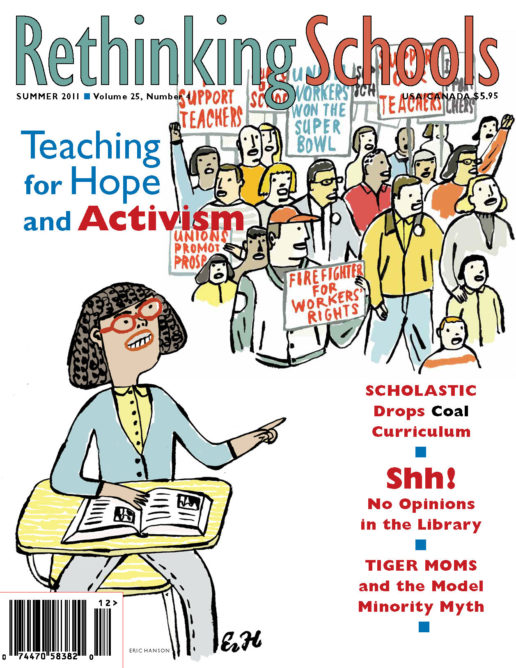Preview of Article:
Shhh!! No Opinions in the Library
Illustrator: Dylan Miner
Nintendo Power, Sports Illustrated for Kids, and a biography of President Obama were on prominent display as I entered the branch library in Forest Hills, Queens. The librarian looked skeptical when I asked if I could leave copies of IndyKids newspaper on the free literature table.
“Does it have opinions?” she asked me. She consulted with the branch manager, who decided I could not leave IndyKids because it is “too political.”
This is the kind of response IndyKids often receives when we approach public libraries. IndyKids is a national, progressive newspaper that aims to engage kids in grades 4 to 7 in national and world issues, to encourage them to form their own opinions, and to become part of the larger movement for justice and peace. With the belief that the news does not have to be hidden or “dumbed down” for kids, IndyKids publishes articles on the financial crisis, same-sex marriage, health care, war, immigrant and labor rights, and global warming—mixed in with stories on youth activism, recipes, and puzzles.
In contrast, take a look at the children’s periodicals section of your local library: Boys’ Life, published by the Boy Scouts of America, has a cartoon Bible story and an ad for Rossi rifles that offers free junior membership to the National Rifle Association when you buy their new gun. American Girl shows girls how to work on the coolest hairstyles and host a pajama fashion show slumber party. Discovery Girls helps readers figure out what color nail polish will suit them. But none of that is political, according to the library staff IndyKids regularly encounters.

